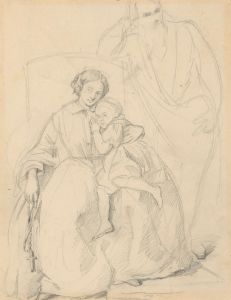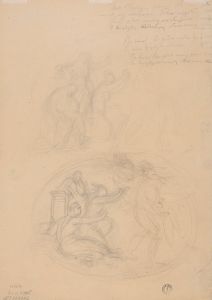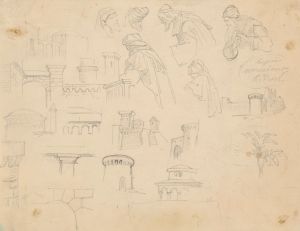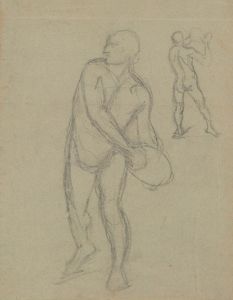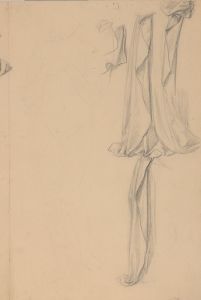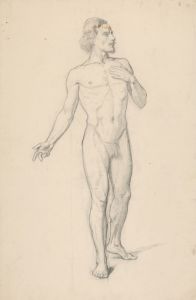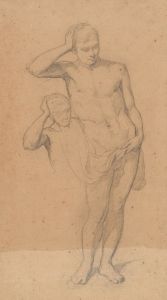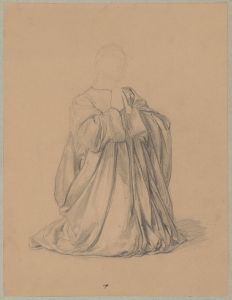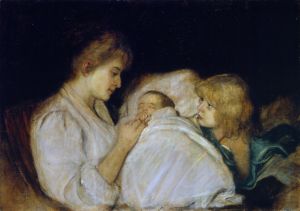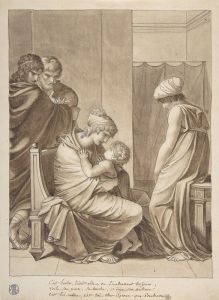
Catherine Jagiellon with her son Sigismund in prison
A hand-painted replica of Józef Simmler’s masterpiece Catherine Jagiellon with her son Sigismund in prison, meticulously crafted by professional artists to capture the true essence of the original. Each piece is created with museum-quality canvas and rare mineral pigments, carefully painted by experienced artists with delicate brushstrokes and rich, layered colors to perfectly recreate the texture of the original artwork. Unlike machine-printed reproductions, this hand-painted version brings the painting to life, infused with the artist’s emotions and skill in every stroke. Whether for personal collection or home decoration, it instantly elevates the artistic atmosphere of any space.
Catherine Jagiellon with her son Sigismund in prison is a painting by the Polish artist Józef Simmler, created in 1862. Józef Simmler was a prominent 19th-century Polish painter known for his historical and genre scenes, often focusing on significant events and figures in Polish history. This particular painting depicts a poignant moment in the life of Catherine Jagiellon, a member of the Polish-Lithuanian Jagiellonian dynasty, and her son, Sigismund.
Catherine Jagiellon was born on November 1, 1526, as the daughter of King Sigismund I the Old of Poland and Bona Sforza, an Italian princess. She was the sister of Sigismund II Augustus, the last Jagiellonian king of Poland. In 1562, Catherine married John III of Sweden, who was then the Duke of Finland. This marriage was part of the complex political alliances of the time, aimed at strengthening ties between Poland and Sweden.
The painting captures a dramatic episode from Catherine's life when she and her son, Sigismund, were imprisoned. This occurred during a period of political turmoil in Sweden. In 1563, John III was captured and imprisoned by his half-brother, King Eric XIV of Sweden, during a conflict over the Swedish throne. Catherine and her young son, Sigismund, were also detained and held in captivity. This period of imprisonment lasted until 1567, when John III was released and subsequently ascended to the Swedish throne after Eric XIV was deposed.
Józef Simmler's painting vividly portrays the emotional and physical hardships faced by Catherine and her son during their imprisonment. The composition of the painting emphasizes the bond between mother and child, highlighting Catherine's strength and resilience in the face of adversity. The somber tones and meticulous attention to detail in the painting reflect Simmler's skill in capturing the historical context and emotional depth of his subjects.
Catherine's son, Sigismund, would later become an important historical figure in his own right. Sigismund III Vasa was elected King of Poland and Grand Duke of Lithuania in 1587, and he also became King of Sweden in 1592, uniting the two crowns for a brief period. However, his reign in Sweden was marked by conflict, and he was eventually deposed in 1599, although he continued to rule in Poland until his death in 1632.
Simmler's painting is an example of 19th-century Polish historical art, which often sought to evoke national pride and reflect on the country's past struggles and triumphs. The painting is housed in the National Museum in Warsaw, where it remains an important piece of Polish cultural heritage. Through his work, Simmler contributed to the preservation and celebration of Polish history, capturing moments that resonate with the nation's identity and collective memory.







